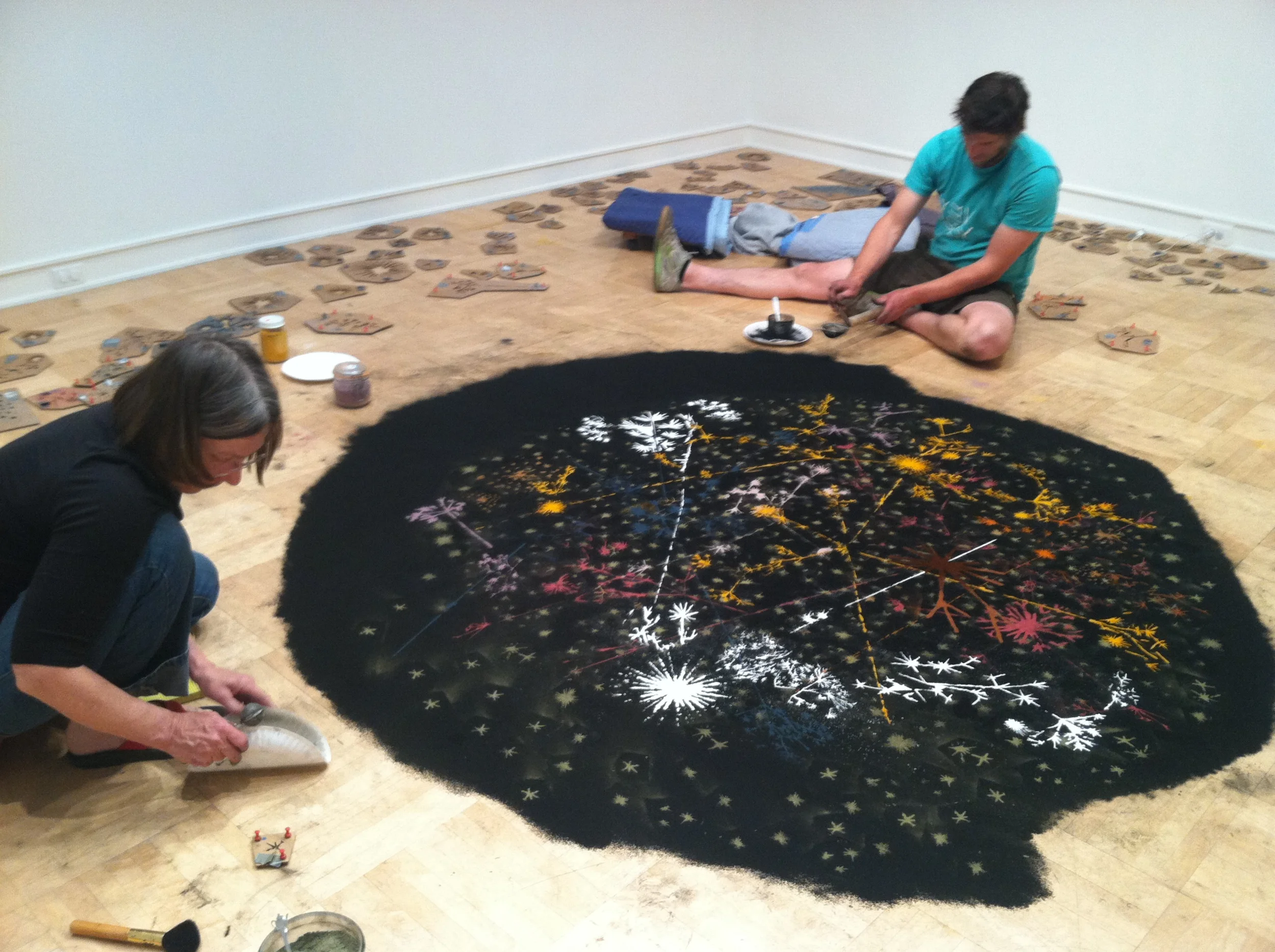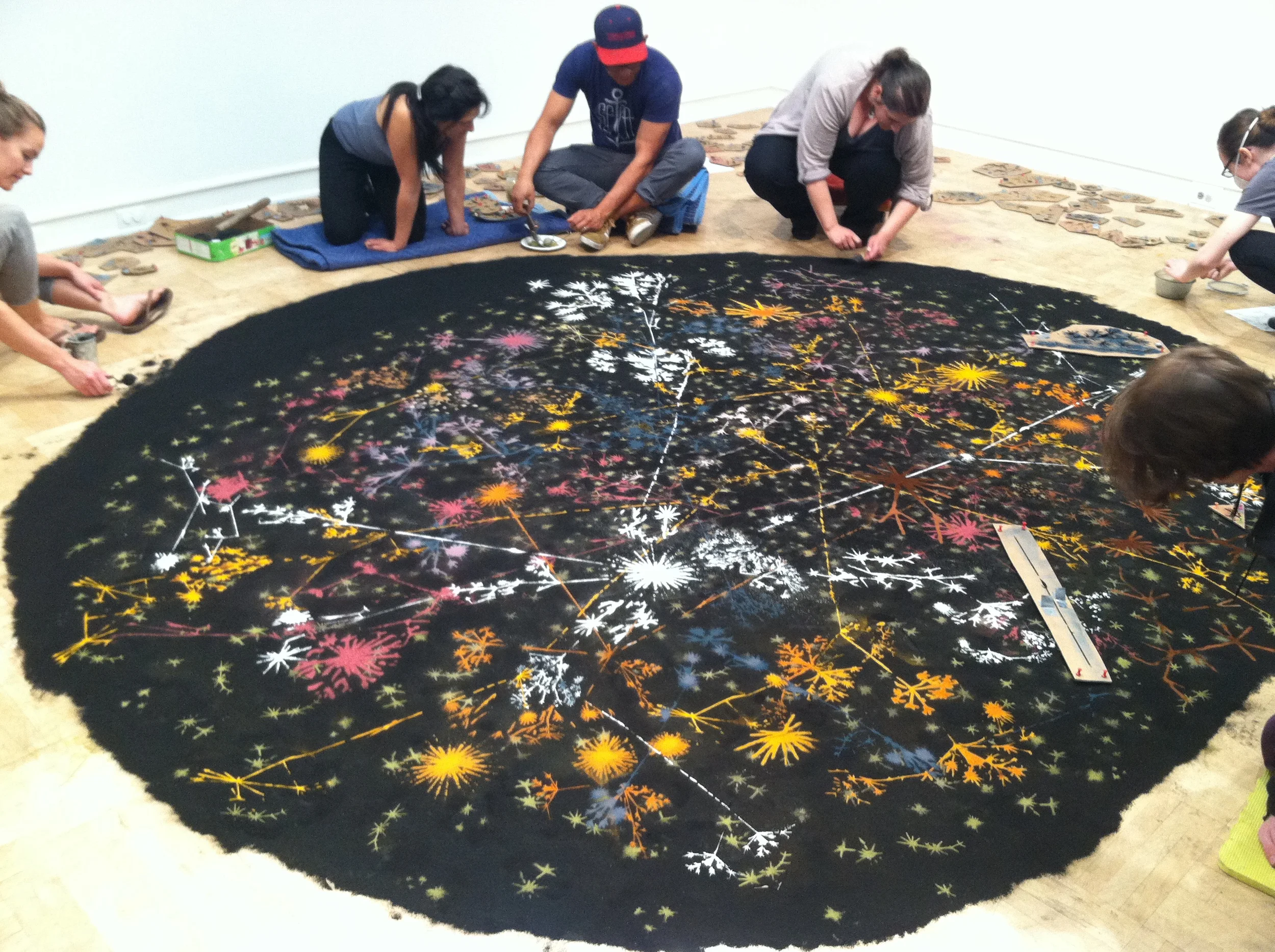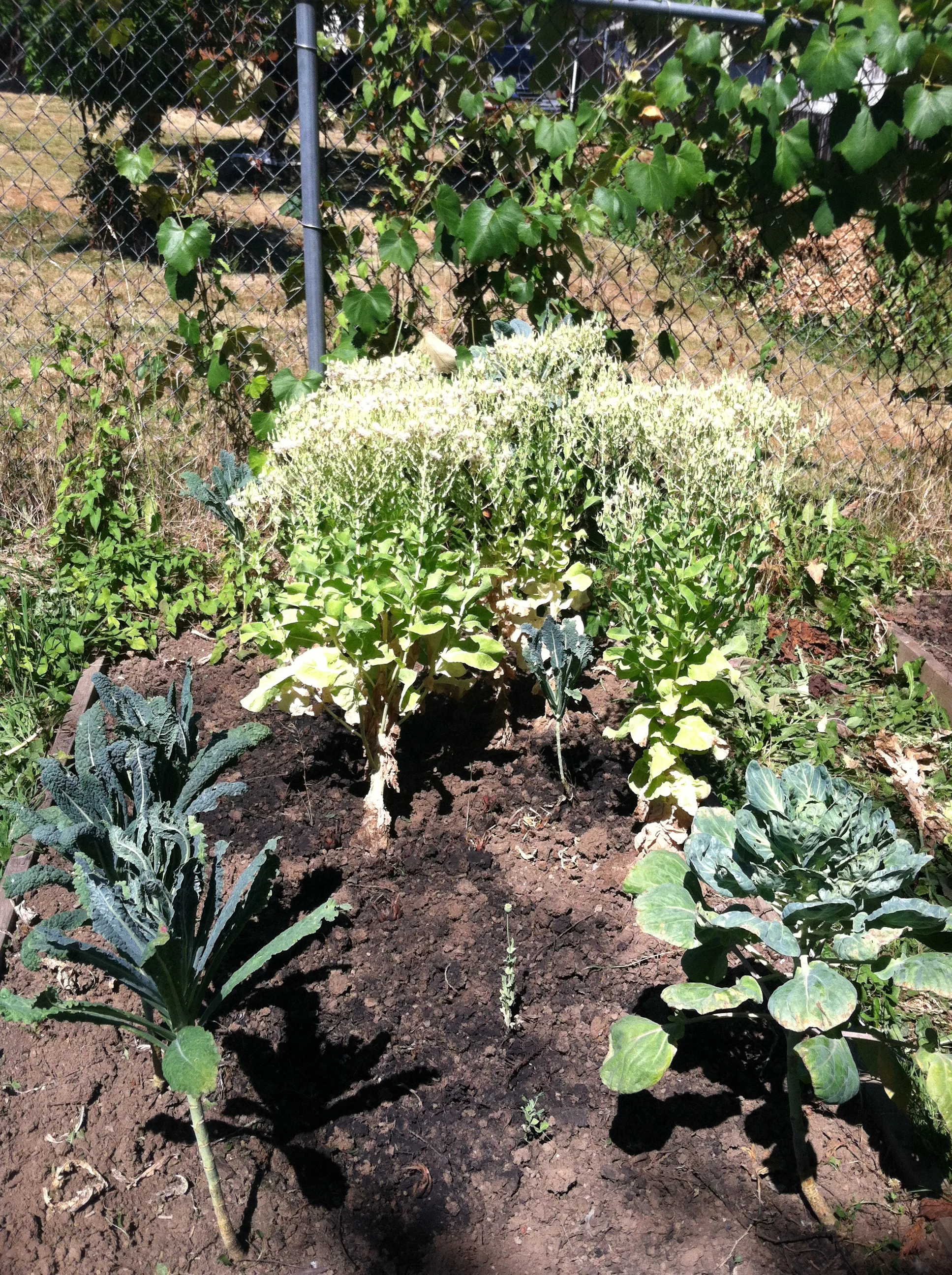























Gegenschein (2014) 27' x 17'
Aerial view: Activated biochar, chalk, sugar, coffee, tumeric, paprika, cocoa, tea, hibiscus, lichen, purple yam powder, indigo, oregano, cardamom powders.
photo credit: Ian Lewis

The imagery that constitutes Gegenschien is derived from a computer-generated image of the internet. Using a laser cutter, I created a series of cardboard stencils that all of the different spices and powders were systematically sifted through to create an interconnected web of particulated material. The black "background" of the piece is a thin layer of activated carbon, a material used as a soil amendment and common material found in filters for water purification.
photo credit: Joe Freeman

Twenty of my friends generously volunteered to help me "build" the internet out of the materials over the span of five days in the Henry Art Gallery. We began in the center, sifting the charcoal onto the floor using tea strainers, and sifting powdered lichen to create a dimensional backdrop to the composition.

The image grew organically out from the center, and I left it up to whomever was helping out that day to decide the material and trajectory of the web. We worked from an image of the world wide web that I had printed off of the internet, but what we were creating was a new map, not a tracing of that image.

The process of creating the work was very similar to a quilting bee, or "stitch and bitch," where everyone present could chat and hang out while they worked, and everyone contributed their own ideas on how the work should grow, constantly in communication with the other people present.

Building the work was also an opportunity for friends from different parts of my life that might not have previously met to get to know one another and work together.

In this way, the collective effort was very much like the building of the internet itself, and was a kind of bonding ritual as well as endurance test.

The last part of the work was the edge. We filled in the charcoal behind us, effectively "painting" ourselves out of the space.

Gegenschien as viewed from above. The viewer stands at the open door and looks out over the floor.
photo credit: Joe Freeman

The final piece resembled a carpet or tapestry and the smell of it was overwhelming at first.
photo credit: Joe Freeman

The title placard contained a QR code that could be scanned by museum visitors' smart phones. It connected the viewer to a specially designed website that described the material contents of the piece.

Once the link was opened, a website with images and labels of all of the pigments could be navigated.

Each material could be selected, and the viewer would be connected to a Wikipedia site where the cultural significance, historical origins, or practical uses of each material was explained in detail, or one could choose to purchase some of each material from Amazon.

After a month of installation, myself and three of my friends swept the piece up in a matter of moments.
film credit: Ian Lewis

Five days of work and many months of planning were reduced to a black mass that could fit into two five-gallon buckets.
Special thank you to everyone who helped me make this work, as well as clean it up and document it. It could never ever have happened without your generosity:
Patricia Davidson, April Surgent, Crescent Calimpong, Granite Calimpong, Jenny Wittlinger, Alice LeBourg, Sam McMillen, Barbara Hathaway, Krista Schoening, Jacob Pipkin, Julia Chamberlain, Morgan Mangiaruga, Katherine Groesbeck, Tim Coleman, Hannah Avila, Fred Tschida, Hannah Patterson, Mark Rudis, Ian Lewis, Joe Freeman, John Taylor, and Avery Trufelman.
You all rock my world.
photo credit: Ian Lewis

Biochar is an excellent amendment for soil. It aids in the retention of water in moisture-poor soils, as well as aids in carbon sequestration. This is a very old technique for increasing the fertility of dirt used for growing food. I mended one of the buckets of biochar into my garden, and gave the rest of it to my friends who also have gardens. In this way, the work lives on.